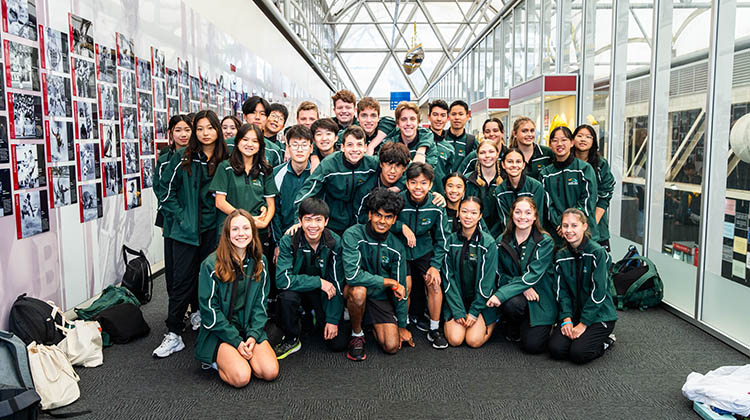Competition a First Step in STEM Careers

One strategy that seems to work well to encourage continued STEM study is building enthusiasm and exposure to STEM in high school.
Take the now 23-year-old Science and Engineering Challenge (SEC) - the competition is national and the finals were held on the 31st of October - which has shown the possibilities that STEM offers to more than 400,000 students since it began.
The SEC is Australia’s longest-running STEM engagement program. It was founded in 2000 by the University of Newcastle and is supported by the Office of the Chief Scientist & Engineer of NSW, Rotary Clubs around Australia and 28 Australian universities. Its aim is to address the skills shortage in science, technology, engineering, and maths (STEM). Each year more than 40,000 students participate in the challenge from more than 1,000 schools.
In 2021, Reed and company published an article entitled 'STEM Outreach: Are We Making a Difference? A Case Study Evaluating the Science and Engineering Challenge Program' based on student survey data collected over a 10-year period.
From 2006 to 2015, 5210 high school and 2445 first-year university students were surveyed to assess whether the SEC influenced their decision to pursue STEM studies. Of the high school physics students, 51.9% reported that the SEC influenced their decision to study physics.
A smaller yet significant impact was reported by chemistry (35.2%) and mathematics (32.0%) students. Further, 30.9% of university students indicated that the SEC influenced their decision to pursue a STEM degree.
Bronwyn O’Neil, the Assistant Head of Science at this year’s overall winner Pacific Hills Christian School, is enthusiastic about the competition and what it brings to her students.
She says part of the reason behind STEM disengagement is that more time needs to be allocated in schools to support the time-consuming nature of STEM activities and the preparation needed to deliver engaging and inspiring STEM projects.
“The challenge is a positive experience for the students. It encourages problem solving, team building, camaraderie, and a sense of healthy competition.
“Students were selected by their interest in science and showing initiative, diligence, and effort in class. We run weekly lunchtime training sessions for about a month prior to each competition,” says O’Neil.
The challenge unfolds over a day and a maximum of eight schools per day compete against each other at one venue, each bringing a team of between 16 and 32 students to participate. It’s been noted over the years that ‘top academic’ students do no better than other groups. The ability to work in a team is the most important ingredient for success.
Students do not find out which challenge activity they will work on until they arrive on the day, they come armed only with a pen and an open mind. The activities they could be set are drawn from a list and will vary for each round of the SEC (regional, state, national).
Each school ‘team’ is randomly divided (by the event organiser) into eight groups of between 2 to 4 students per group. Each group will then do either one full-day activity, or two half-day activities (i.e. one activity in the morning session, and a different one in the afternoon session). Students are awarded points for each activity and the school with the most cumulative points at the end of the day is declared the winner.
There were eight different activities that all the schools completed - Pacific Hills won the competition segments Flight, Confounding Communications and Hover.
The SEC is not specifically curriculum based, but ties in and gives the students hands on experience of concepts covered in class.
O’Neil feels the competition lets students grow in their confidence and appreciation of problem solving and teamwork in science and engineering.
“Some students find some of the challenges difficult, however most students thrive on the chance to solve problems and work together. The students have become a very close team and were so excited to have made it to the Nationals. They enjoyed the whole process and a win is the icing on the cake.
“Our science lab assistant, Dr Gloria Quee runs the project as part of her job. She is able to provide wisdom, enthusiasm, and encouragement to our students.”